
A string orchestra is an orchestra consisting solely of a string section made up of the bowed strings used in Western Classical music. The instruments of such an orchestra are most often the following: the violin, which is divided into first and second violin players, the viola, the cello, and usually, but not always, the double bass.

Eine kleine Nachtmusik, K. 525, is a 1787 composition for a chamber ensemble by Wolfgang Amadeus Mozart (1756–1791). The German title means "a little night music". The work is written for an ensemble of two violins, viola, cello and double bass, but is often performed by string orchestras. The serenade is one of Mozart's most famous works.
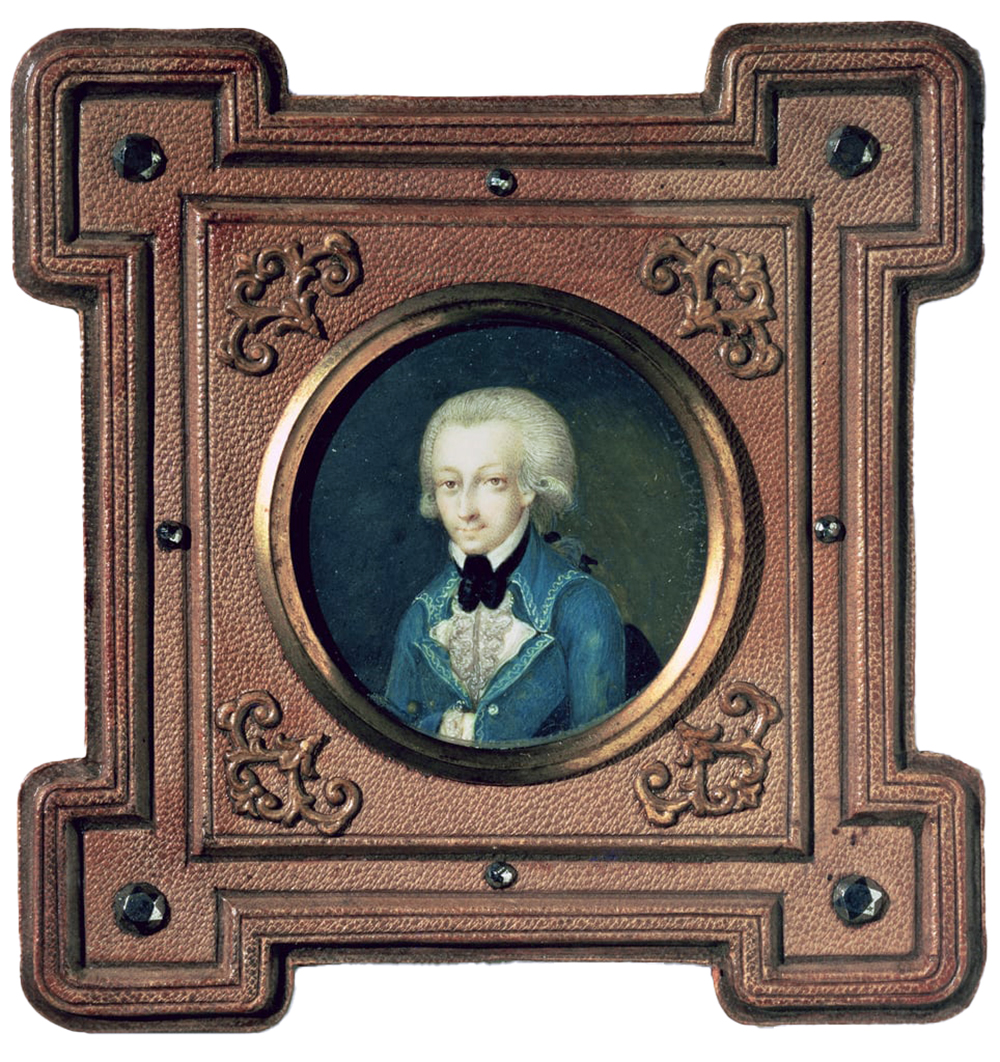
The Symphony No. 25 in G minor, K. 183/173dB, was written by the then 17-year-old Wolfgang Amadeus Mozart in October 1773, shortly after the success of his opera seria Lucio Silla. It was supposedly completed in Salzburg on October 5, a mere two days after the completion of his Symphony No. 24, although this remains unsubstantiated. Its first movement was used as the opening music in Miloš Forman's film biographical Amadeus.
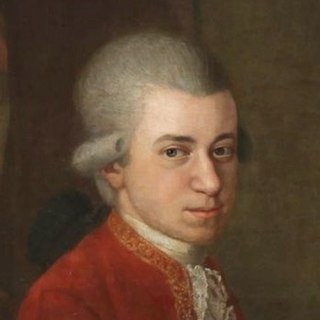
Symphony No. 35 in D major, K. 385, also known as the Haffner Symphony, was composed by Wolfgang Amadeus Mozart in 1782. It was commissioned by the Haffners, a prominent Salzburg family, for the occasion of the ennoblement of Sigmund Haffner the Younger. The Haffner Symphony should not be confused with the eight-movement Haffner Serenade, another piece Mozart wrote on commission from the same family in 1776.

The Symphony No. 29 in A major, K. 201/186a, was completed by Wolfgang Amadeus Mozart on 6 April 1774. It is, along with Symphony No. 25, one of his better known early symphonies. Stanley Sadie characterizes it as "a landmark ... personal in tone, indeed perhaps more individual in its combination of an intimate, chamber music style with a still fiery and impulsive manner."

Symphony No. 20 in D major, K. 133, was composed by Wolfgang Amadeus Mozart in July, 1772, when Mozart was sixteen years old. This symphony is one of many written during the period Mozart stayed in Salzburg, between two trips to Italy. Compared to other symphonies Mozart wrote in this period, the scoring is extravagant, featuring two trumpets in addition to the standard oboes, horns, and strings. The key of D major, which is a key often reserved for ceremonial music, is well suited to the presence of these trumpets.
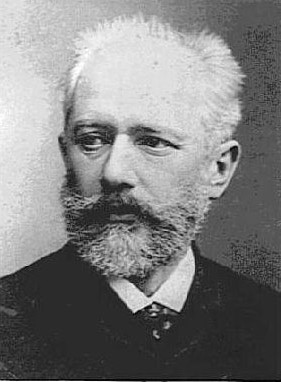
Tchaikovsky's Serenade for Strings in C major, Op. 48, was composed in 1880. It was first performed October 30, 1881 in St. Petersburg at a Russian Musical Society concert conducted by Eduard Nápravník.

The String Quartet No. 19 in C Major, K. 465 by Wolfgang Amadeus Mozart, nicknamed "Dissonance" on account of its unusual slow introduction, is perhaps the most famous of his quartets.
The String Quintet No. 4 in G minor, K. 516, written by Wolfgang Amadeus Mozart, is like all of Mozart's string quintets a "viola quintet" in that it is scored for string quartet and an extra viola . The mood of the piece is dark and melancholic, typical of Mozart's G minor works.
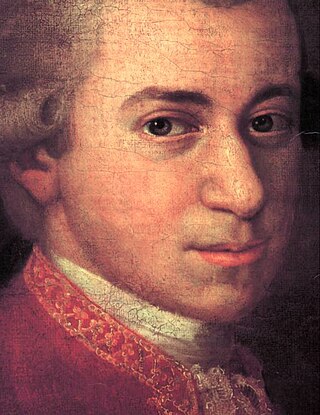
The Serenade No. 10 for winds in B-flat major, K. 361/370a, is a serenade by Wolfgang Amadeus Mozart scored for thirteen instruments: twelve winds and string bass. The piece was probably composed in 1781 or 1782 and is often known by the subtitle Gran Partita, though the title is a misspelling and not in Mozart's hand. It consists of seven movements.
An organ concerto is an orchestral piece of music in which a pipe organ soloist is accompanied by an an orchestra, although some works exist with the name "concerto" which are for organ alone.

The Serenade for Orchestra No. 9 in D major K. 320, Posthorn, was written by Wolfgang Amadeus Mozart in Salzburg, in 1779. The manuscript is dated 3 August 1779 and was intended for the University of Salzburg's "Finalmusik" ceremony that year.

Symphony No. 6 in F major, K. 43, was composed by Wolfgang Amadeus Mozart in 1767. According to Alfred Einstein in his 1937 revision of the Köchel catalogue, the symphony was probably begun in Vienna and completed in Olomouc, a Moravian city to which the Mozart family fled to escape a Viennese smallpox epidemic; see Mozart and smallpox.
The Serenade No. 5 in D major, K. 204/213a was written on 5 August 1775 by Wolfgang Amadeus Mozart for ceremonies at the University of Salzburg. The work is very similar to the serenade K. 203, composed for Salzburg the previous summer.
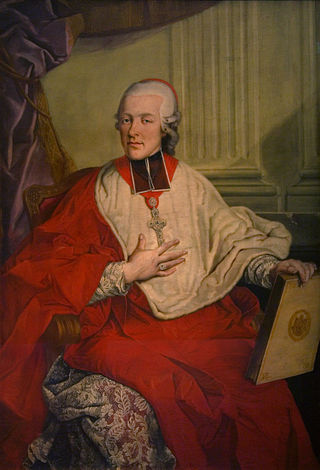
The Serenade No. 4 in D major, K. 203/189b was written in August 1774 by Wolfgang Amadeus Mozart for ceremonies at the University of Salzburg. It is nicknamed Colloredo after Mozart's patron, Count Hieronymus von Colloredo. The work is very similar to the serenade K. 204 composed for Salzburg the following summer.

The Missa solemnis in C major, K. 66, is a mass composed by Wolfgang Amadeus Mozart in 1769. It is scored for SATB soloists and choir, violins I and II, viola, 2 oboes, 2 horns, 2 clarini, 2 trumpets and basso continuo.
The Divertimento No. 17 in D major, K. 334/320b was composed by Wolfgang Amadeus Mozart between 1779 and 1780 and was possibly composed for commemorating the graduation of a close friend of Mozart's, Georg Sigismund Robinig, from his law studies at the University of Salzburg in 1780. Lasting about 42 minutes, it is the longest of the divertimenti by Mozart.
Michael Haydn's Serenade in D major, Perger 87, MH 86 was written in Salzburg in 1767.
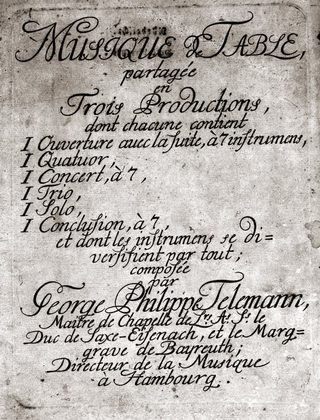
Tafelmusik is a collection of instrumental compositions by Georg Philipp Telemann (1681–1767), published in 1733. The original title is Musique de table. The work is one of Telemann's most widely known compositions; it is the climax and at the same time one of the last examples of courtly table music.













